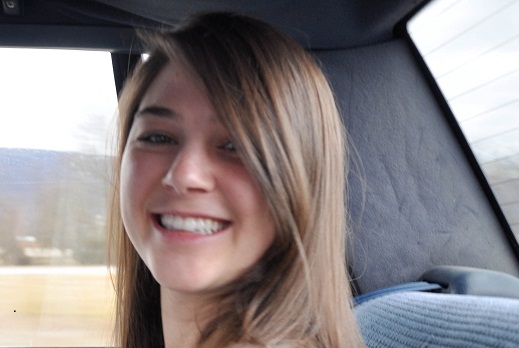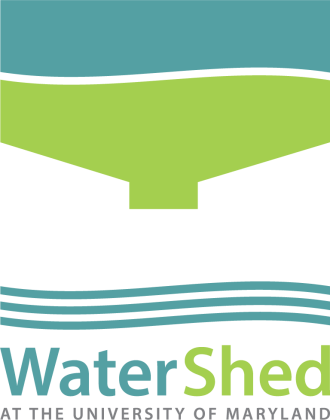
Leah Davies, Team Leader, on Trip to Visit WaterShed
Photo Credit: Jeff Gipson
Leah Davies is an adamant believer in the messages of WaterShed, and does not shy from an opportunity to share them. Some of these opportunities have come by chance, like when she and some teammates happened to be having dinner at the same restaurant in Annapolis as Governor Martin O’Malley. Others, like the several media outlets she’s been tasked to speak with, are by design, purely because of her ability to convey the important messages of WaterShed so beautifully.
A native of Tampa, Florida pursuing her Master of Architecture degree, Leah is not only one of the more visible faces of WaterShed, she is one of the more “invisible” ones too, preparing communications materials and maintaining the team’s Facebook page. Putting her degree to work, Leah was also a key team leader in the master drawing set of the house. Being very handy with the modeling software, Revit, Leah has taken those first drawings and transformed them to the “as-built” document-set used for WaterShed’s master plan. Below Leah talks about what she’s learned on the project, and what she hopes others will learn too.
What has been your personal WaterShed moment so far?
LD: Honestly, the most rewarding experience I have had thus far was speaking with professionals at the International Builders Show in January and hearing how incredible, relevant, and innovative our design is. As students, it is hard to adjust to the limitations of “real world” design and construction. This conference gave us not only the opportunity to share our message, but also reinforcement that good design can be realized in a practical and affordable manner.
Talk about an unexpected, amazing, frightening, or unlikely experience while working on WaterShed.
LD: One unexpected and amazing experience I have had while working on WaterShed has been meeting the governor of Maryland. After giving a presentation to members of the governor’s staff with a few teammates, we all went for bite to eat at a small, primarily vacant restaurant. Out of all the restaurants in the city, the governor happen to come to the same one, where we were able to meet him and explain how WaterShed moves the Chesapeake Bay region toward a more sustainable future.
What has been your most important learning experience on the project?
LD: The most important thing WaterShed has taught me is the role of the occupant in a successful design. Design is not merely about intention; it is also about impact. I believe WaterShed gives true form to its intention, and those who experience it will truly be made aware of water and the cyclic nature of a functioning ecosystem within their own home. One other very important lesson I have learned from the construction process is that what you draw may not be exactly what you build.
Has working on WaterShed personally affected the way you use water?
LD: Yes. It is easy to take for granted the fact when you turn a knob on your kitchen sink clean potable water comes out for as long a you leave it; but the truth is, that is a rare luxury that takes extreme amounts of work, energy, and natural resources, and is not shared throughout the world. Since working on WaterShed, I have not only learned about how to better manage and use water within my own home, I have learned the processes of our current water cycle and how the built environment affects it. As a result, I take shorter showers, wash my dishes quickly, run less laundry loads, and constantly make an effort to educate others that clean water is not a right, it is a privilege.
How has working on WaterShed influenced your career path?
LD: It is hard to say at this point in my career, but I hope so. I have always been interested in regional architecture that responds to local issues. WaterShed has given me an opportunity to give physical form to this idea at the level of a single residence. I intend to take the design notions and concepts I have learned in this project with me into the real world and apply them in all projects, and at all scales that I design.
When people come to visit WaterShed on the Mall in September, what do you hope they will take away from the experience?
LD: For those that choose to come see WaterShed, along with 18 other teams competing in the Solar Decathlon in September, I hope they realize every person and every built home makes an impact on our environment. It is estimated that half of the wetlands in the US have been lost since 1900. We need to separate ourselves from the idea that there is nature and then there is us; the way we live CAN and SHOULD be in harmony with natural ecosystems and WaterShed teaches people that this is possible.
What do you always have with you on the job site?
LD: When I am on the job site, I always have my Ipad. Whether I need to look up our drawing details, research installation techniques for a certain material, track an order, take photos for a sponsor, or sketch an idea – my Ipad is an ideal tool.
How do you spend your time when you’re not on the job site?
LD: What time? 🙂 If and when I have time away from the job site, I usually work on our communications materials, my thesis, or simply catch up on laundry and grocery shopping.
